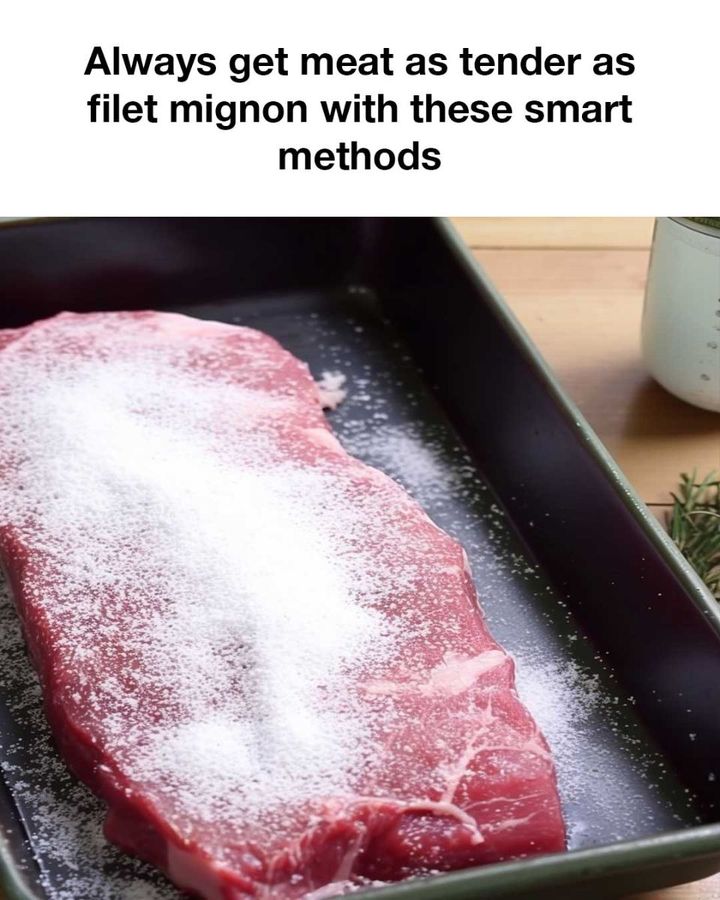ADVERTISEMENT
—
### 4. **Marinate Your Meat**
Marinating meat can significantly increase tenderness by both infusing it with flavor and breaking down tough fibers. **Acidic ingredients** like **vinegar**, **lemon juice**, or **yogurt** help to tenderize meat by breaking down proteins. Here’s how to make an effective marinade:
– **Acid**: Lemon juice, vinegar, or wine will break down the muscle fibers and make the meat tender.
– **Oil**: Adds moisture and helps prevent the meat from drying out during cooking.
– **Salt**: A little salt in your marinade can help draw moisture into the meat, which helps to tenderize it as well.
– **Aromatics and spices**: Garlic, onions, herbs, and spices not only provide flavor but also aid in tenderizing by creating a more flavorful crust when cooking.
Let your meat marinate in the fridge for at least **30 minutes to 2 hours**—longer for tougher cuts, but be careful not to let it sit too long, as the acids can break down the meat too much.
—
### 5. **Don’t Overcook the Meat**
Overcooking meat is one of the easiest ways to turn a tender cut into something dry and tough. The key to achieving the tenderness of filet mignon is cooking the meat just right.
– For **steaks**, use a **meat thermometer** to monitor the internal temperature and pull the meat off the heat once it reaches your desired doneness. A **medium-rare steak** is typically cooked to about **130-135°F (54-57°C)**, while a **medium steak** should be around **140-145°F (60-63°C)**.
– **Rest your meat**: After cooking, always let your meat rest for 5-10 minutes before cutting into it. This allows the juices to redistribute throughout the meat, ensuring it stays moist and tender.
—
### 6. **Slice Meat Against the Grain**
Slicing meat properly can make a huge difference in its tenderness. **Slicing against the grain**—which means cutting perpendicular to the direction of the muscle fibers—breaks up the long muscle fibers and makes the meat easier to chew. When cutting steaks, roasts, or even pork chops, always pay attention to the direction of the grain and cut across it to maximize tenderness.
—
### 7. **Tenderize with Salt**
Using salt as a pre-treatment can make a big difference in how tender your meat turns out. **Dry brining**—sprinkling salt on the meat and allowing it to rest in the fridge for several hours before cooking—helps to break down proteins, drawing out moisture and then reabsorbing it, resulting in a juicier, more tender cut.
—
### Conclusion: Tender Meat Every Time
With the right techniques and methods, you can make almost any cut of meat as tender as **filet mignon**. Whether you’re using a **slow cooking method**, **marinating**, **pounding with a tenderizer**, or simply ensuring you don’t overcook your meat, these tips can elevate your meals and help you achieve the perfect texture every time.
So next time you’re cooking up a steak or roast, remember that tender meat is not just for the expensive cuts—by using these smart methods, you can transform any cut into a delicious, melt-in-your-mouth masterpiece.
ADVERTISEMENT
